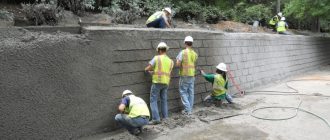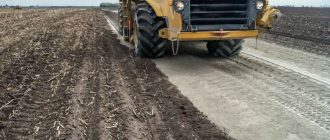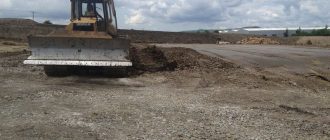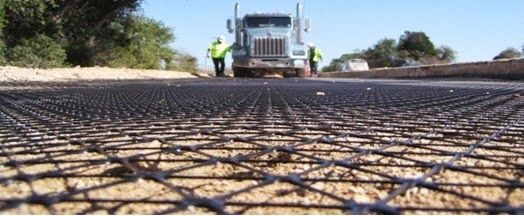
Innovative Approaches to Soil Stabilization in Urban Development
Soil stability is a critical factor in urban development, as it provides the foundation for the construction of buildings, roads, and other infrastructure. However, urbanization often leads to the degradation of soil quality, which can result in structural instability and increased risks of landslides and other hazards. In order to address these challenges, innovative approaches to soil stabilization have been developed.
These approaches involve the use of advanced techniques and materials to improve the physical and chemical properties of soil, making it more resistant to erosion, compaction, and other forms of degradation. One such approach is the use of geosynthetics, which are synthetic materials that are placed within the soil to enhance its stability. These materials can be used to reinforce slopes, stabilize embankments, and prevent soil erosion.
Another innovative approach is the use of biological methods, such as the cultivation of plants with deep root systems. These plants can help to bind the soil particles together, improving its stability and reducing the risks of erosion. In addition, the roots of these plants can absorb excess water, reducing the risks of flooding and waterlogging.
Furthermore, the application of soil stabilization techniques can also have positive environmental impacts. By improving the stability and quality of soil, these approaches can help to prevent the loss of topsoil and reduce the need for extensive excavation and land grading. This, in turn, can help to preserve natural habitats, protect biodiversity, and mitigate the impacts of climate change.
Importance of Soil Stabilization in Urban Development
Soil stabilization plays a vital role in the development of urban areas. As cities grow and expand, the demand for new infrastructure increases, leading to the need for innovative approaches to ensure stable and sustainable foundations.
The soil on which urban development takes place is often weak or unstable, which can lead to a variety of issues such as ground settlement, foundation failure, and structural damage. Soil stabilization techniques aim to improve the engineering properties of the soil, making it more suitable for construction and reducing the risk of these problems.
One of the main benefits of soil stabilization is the increase in soil strength and load-bearing capacity. By adding stabilizing agents or reinforcing materials to the soil, its ability to withstand loads and stresses from buildings, roads, and other structures is improved. This not only enhances the safety and stability of the built environment but also allows for more efficient land use and greater development possibilities.
In addition to enhancing soil strength, soil stabilization also helps to control soil erosion and prevent soil contamination. By stabilizing the soil, the risk of erosion caused by water, wind, or human activities is reduced, reducing the loss of fertile topsoil and preserving the quality of the land. Furthermore, soil stabilization can be used to prevent the spreading of contaminants, such as heavy metals or pollutants, by encapsulating them within the stabilized soil matrix.
Another important aspect of soil stabilization in urban development is environmental sustainability. By using innovative approaches to stabilize the soil, such as bio-stabilization or geosynthetics, the need for virgin materials and energy-intensive construction techniques can be reduced. This promotes the use of recycled or locally available materials and minimizes the environmental impact of urban development projects.
In conclusion, soil stabilization is of utmost importance in urban development. It not only improves the strength and stability of the soil but also helps to control erosion, prevent contamination, and promote environmental sustainability. By adopting innovative approaches to soil stabilization, urban areas can be developed in a more sustainable and resilient manner, ensuring the long-term success and safety of the built environment.
Challenges in Soil Stabilization
The process of soil stabilization is crucial in urban development, as it helps create sustainable foundations for infrastructure and buildings. However, there are several challenges that need to be addressed in order to implement innovative approaches to soil stabilization.
One of the main challenges is the diverse nature of soils in urban areas. Urban soils range from clayey to sandy and have varying levels of compaction and contamination. This makes it difficult to implement a one-size-fits-all approach to soil stabilization. Innovative approaches need to be adaptable and flexible to suit the specific soil conditions of each urban development project.
Another challenge is the limited availability of suitable materials for soil stabilization. Traditional methods often require the use of cement or lime, which can be expensive and have environmental implications. Finding alternative materials that are cost-effective, readily available, and environmentally friendly is essential in developing sustainable soil stabilization techniques.
Additionally, the high urbanization rate in many areas puts pressure on available land and limits the space for construction and infrastructure development. This means that innovative approaches to soil stabilization need to be efficient and minimize the disruption caused by construction activities. Techniques such as deep soil mixing or jet grouting can be employed to stabilize soil without the need for excessive excavation or disruption.
Furthermore, the long-term performance of stabilized soil is another challenge. Over time, soil can settle, degrade, or be subjected to environmental changes that affect its stability. Innovative monitoring systems and maintenance strategies need to be implemented to ensure the long-term stability and sustainability of soil stabilization efforts.
In conclusion, the challenges in soil stabilization for urban development require innovative approaches that are adaptable to diverse soil conditions, utilize alternative materials, minimize disruption, and ensure long-term stability. By addressing these challenges, sustainable foundations can be created that support the growth and development of urban areas.
Traditional Methods of Soil Stabilization
Innovative approaches to urban soil stabilization have gained significant attention in recent years. However, it is important to also consider the traditional methods of soil stabilization that have been used for centuries.
One traditional method of soil stabilization is the use of lime. Lime has been used in construction and agriculture for centuries due to its ability to improve soil stability. When lime is added to soil, it reacts with the clay particles, reducing their plasticity and improving their cohesion. Lime can also neutralize acidic soils, which can help promote the growth of plants.
Another traditional method is the use of cement stabilization. Cement stabilization involves incorporating cement into the soil, which then hardens and provides structural stability. This method is commonly used in road construction and other infrastructure projects. Cement stabilization can significantly improve the strength and durability of the soil, making it suitable for heavy load-bearing structures.
Yet another traditional method is the use of bitumen stabilization. Bitumen is a viscous material that can be mixed with soil to improve its stability. Bitumen stabilization is commonly used in road construction, particularly in areas with high moisture content in the soil. The bitumen acts as a binder, preventing the soil particles from separating and forming cracks.
Additionally, traditional methods often involve the use of natural fibers, such as jute or coir, to stabilize the soil. These natural fibers can be mixed with the soil to improve its tensile strength and prevent erosion. Natural fibers are a sustainable alternative to synthetic reinforcements and can provide long-lasting stability to the soil.
- Lime stabilization
- Cement stabilization
- Bitumen stabilization
- Use of natural fibers
While innovative approaches to urban soil stabilization are important for creating sustainable foundations, it is crucial not to overlook the effectiveness of traditional methods. By combining both innovative and traditional techniques, urban development projects can achieve long-lasting and sustainable soil stabilization.
Geosynthetics for Soil Stabilization
Soil stabilization is an essential aspect of urban development as it ensures the sustainability of foundations and infrastructure. Traditional approaches to soil stabilization, such as compaction and chemical treatment, have limitations in terms of cost, time, and environmental impact. Therefore, innovative approaches and technologies are being explored to achieve more efficient and sustainable soil stabilization.
One such technology is the use of geosynthetics, which are engineered materials that can improve the properties of soil. Geosynthetics can be in the form of geotextiles, geogrids, geocells, or geomembranes, among others. These materials are made from polymers and can exhibit properties like high tensile strength, durability, and resistance to biological and chemical degradation.
Geosynthetics can be used for various soil stabilization applications, including reinforcement, separation, filtration, and erosion control. Reinforcement involves the use of geosynthetics to enhance the load-bearing capacity of the soil. This is particularly useful in areas with weak or loose soil, where geosynthetics can improve the stability of foundations and prevent settlement.
Separation is another important function of geosynthetics in soil stabilization. By placing a geosynthetic layer between different soil layers, it prevents the mixing of materials and maintains the integrity of each layer. This is crucial in preventing the loss of soil strength and stability over time.
Filtration is a function of geosynthetics that allows water to pass through while retaining soil particles. This is useful in areas where soil erosion is a concern. The geosynthetic acts as a barrier to sediment migration, reducing the risk of erosion and providing long-term stability to the soil.
Using geosynthetics for soil stabilization offers numerous advantages. These materials are lightweight, easy to install, and cost-effective compared to traditional methods. They also have a longer lifespan and require less maintenance, making them a sustainable solution for soil stabilization in urban development.
In conclusion, geosynthetics offer innovative approaches to soil stabilization in urban development. Their versatile applications and numerous advantages make them a viable solution for sustainable foundations and infrastructure. By employing geosynthetics, urban developers can achieve efficient and long-lasting soil stabilization while minimizing costs and environmental impact.
Chemical Soil Stabilization Techniques
Chemical soil stabilization techniques are innovative approaches in urban development that aim to create sustainable foundations. These techniques involve the use of various chemicals to improve the engineering properties of soil, making it more suitable for construction purposes.
One common chemical used in soil stabilization is cement. Cementitious stabilization involves mixing cement with soil to create a solid and durable material. The cement reacts with the soil particles, binding them together and increasing their strength. This technique is commonly used in road construction projects to improve the load-bearing capacity of the soil.
Lime is another chemical that is often used for soil stabilization. Lime stabilization involves the addition of lime to soil, which causes a chemical reaction that increases the soil’s strength and stability. Lime can also improve the soil’s plasticity, reducing its shrink-swell potential. This technique is commonly used in areas with expansive clay soils.
Polymer soil stabilization techniques involve the use of synthetic polymers to improve the engineering properties of soil. Polymers, such as polyacrylamide, are added to the soil, where they form a network of bonds that increase the soil’s cohesion and stability. This technique is particularly useful in areas with sandy soils, as it can help prevent erosion and improve the soil’s ability to retain water.
Innovations in chemical soil stabilization techniques continue to emerge, with researchers exploring new chemicals and formulations to optimize soil properties. These approaches are crucial in urban development, as they allow for the construction of sustainable foundations that can support the growing needs of modern cities.
Bioengineered Approaches to Soil Stabilization
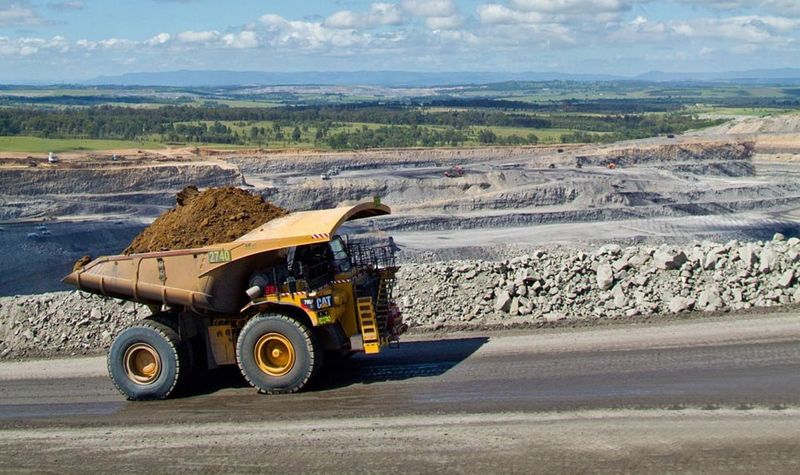
Innovative approaches to soil stabilization in urban development have gained increasing attention in recent years, as the importance of creating sustainable foundations for construction projects becomes more evident. One of the most promising and environmentally friendly solutions to soil stabilization is the use of bioengineered approaches.
Bioengineered approaches to soil stabilization involve the use of living organisms and their products to improve the engineering properties of soil. This includes the use of plants, bacteria, fungi, and other microorganisms to enhance soil stability and prevent erosion.
One example of a bioengineered approach is the use of plant root systems to reinforce soil. This technique, known as bioengineering or biotechnical stabilization, involves planting vegetation with deep and extensive root systems to bind and strengthen soil. The roots of these plants act as natural anchors, providing stability and reducing the risk of soil erosion.
Another bioengineered approach is the use of microbial-induced carbonate precipitation (MICP) to stabilize soil. MICP involves the use of bacteria that produce calcium carbonate, which acts as a binding agent for soil particles. This process can significantly improve soil strength and prevent soil erosion, making it suitable for urban development projects.
Bioengineered approaches to soil stabilization offer several advantages over traditional stabilization methods. They are environmentally friendly, as they utilize natural processes and materials. They also have the potential to improve soil fertility and biodiversity, as the presence of plants and microorganisms can enrich the soil and support the growth of beneficial organisms.
Furthermore, bioengineered approaches can be cost-effective in the long term. While the initial implementation may require additional resources and expertise, the long-term benefits, such as reduced maintenance and erosion control, can outweigh the initial costs.
In conclusion, bioengineered approaches to soil stabilization offer innovative and sustainable solutions to the challenges of urban development. By utilizing living organisms and their products, these approaches can enhance soil stability, prevent erosion, and promote environmental health. Incorporating bioengineering techniques into construction projects can lead to more sustainable and resilient urban environments.
Mechanical Soil Stabilization Methods
Mechanical soil stabilization approaches are innovative methods used in urban development to create sustainable foundations. These methods involve the mechanical alteration of soil properties to improve its stability and strength, making it suitable for construction purposes.
One common mechanical soil stabilization method is compaction. This technique involves the use of heavy machinery to compress soil particles together, reducing air voids and increasing soil density. Compaction increases the load-bearing capacity of the soil, making it more resistant to settlement and deformation.
Another approach is soil mixing, where the soil is mechanically blended with additives such as cement or lime. This process improves the soil’s strength and durability by creating a chemical reaction that binds the soil particles together. Soil mixing can be done in-situ or ex-situ, depending on the project requirements.
In addition to compaction and soil mixing, mechanical soil stabilization methods also include techniques such as soil reinforcement and geosynthetic materials. Soil reinforcement involves the use of materials like geotextiles, geogrids, and geotubes to strengthen the soil and enhance its stability. Geosynthetic materials are placed within the soil to provide additional tensile strength, preventing soil erosion and improving overall soil performance.
Overall, mechanical soil stabilization methods contribute to the development of sustainable urban areas by creating strong and stable foundations for construction projects. These approaches ensure the long-term stability of structures and minimize the risk of soil-related issues, such as foundation settlement or slope failure.
Electrokinetic Soil Stabilization Solutions
In urban development projects, finding innovative approaches to soil stabilization is essential for creating sustainable foundations. One such approach is electrokinetic soil stabilization, which offers a unique solution to soil stabilization challenges.
Electrokinetic soil stabilization involves the use of electrical current to improve the properties of soil. Through a process known as electroosmosis, positive and negative ions are mobilized within the soil. This movement of ions helps to enhance the soil’s strength, permeability, and overall stability.
This method is particularly beneficial in urban areas where traditional soil stabilization techniques may not be feasible. For example, in areas with limited access to heavy machinery or where excavation is not possible, electrokinetic soil stabilization can be a viable option.
One of the key advantages of electrokinetic soil stabilization is its ability to minimize disruption to the existing urban environment. Since the process is largely non-invasive, it allows for soil stabilization without the need for extensive excavation or the removal of existing infrastructure.
To implement electrokinetic soil stabilization, a series of electrodes are installed in the ground at regular intervals. These electrodes are then connected to a power source, which supplies the necessary electrical current. The current is applied for a specific duration, allowing it to effectively modify the soil properties.
Electrokinetic soil stabilization can be used in a variety of urban development projects, including the construction of buildings, roads, and underground infrastructure. The improved soil properties achieved through this method help ensure the long-term stability and durability of these structures.
In conclusion, electrokinetic soil stabilization offers an innovative and sustainable approach to soil stabilization in urban development. Its non-invasive nature, coupled with its ability to enhance soil properties, makes it a valuable solution for creating stable foundations in urban environments.
Innovative Soil Stabilization Technologies
As urban development continues to expand, the need for effective soil stabilization approaches becomes increasingly important. Traditional methods of soil stabilization, such as compaction and chemical treatments, have proven to be effective in creating stable foundations for construction projects. However, these approaches often have negative environmental impacts and are not always sustainable in the long term.
To address these challenges, innovative soil stabilization technologies have been developed. These approaches aim to create sustainable foundations while minimizing environmental impact. One such technology is the use of geosynthetics, which are synthetic materials designed to enhance soil stability. Geosynthetics can be used in a variety of applications, including soil reinforcement, erosion control, and landfill construction. By incorporating geosynthetics into soil stabilization projects, developers can create strong and stable foundations while reducing the need for traditional construction materials.
Another innovative approach to soil stabilization is the use of bio-based materials. These materials, such as biopolymers and biological enzymes, can be used to improve soil properties and enhance stability. Bio-based materials are environmentally friendly and sustainable, making them a desirable option for urban development projects.
Additionally, advanced soil stabilization techniques, such as soil-cement mixing and soil grouting, have been developed to provide more effective and efficient stabilization. These techniques involve the mechanical mixing of cement or grout into the soil, resulting in a stronger and more stable foundation. These methods are particularly useful in areas with poor soil conditions or high water content.
Overall, innovative soil stabilization technologies offer promising solutions for creating sustainable foundations in urban development projects. By incorporating geosynthetics, bio-based materials, and advanced techniques, developers can create strong and stable foundations while minimizing environmental impact. These approaches have the potential to revolutionize the field of soil stabilization and pave the way for more sustainable urban development in the future.
Frequently asked questions:
What are some innovative approaches to soil stabilization in urban development?
Some innovative approaches to soil stabilization in urban development include the use of geosynthetics, biotechnical techniques, and the incorporation of green infrastructure.
How can geosynthetics be used for soil stabilization in urban development?
Geosynthetics, such as geotextiles and geogrids, can be used to reinforce the soil and provide additional support and stability. They are often used in combination with other techniques, such as retaining walls, to prevent soil erosion and slope failure.
What are some examples of biotechnical techniques used for soil stabilization in urban development?
Biotechnical techniques, such as the use of vegetation and erosion control blankets, can be used to stabilize slopes and control erosion. Planting vegetation with deep root systems helps to bind the soil and prevent erosion, while erosion control blankets provide immediate protection until the vegetation is established.
How does the incorporation of green infrastructure contribute to soil stabilization in urban development?
The incorporation of green infrastructure, such as rain gardens and green roofs, helps to manage stormwater runoff and reduce the amount of water that infiltrates the soil. This can help to prevent soil erosion and improve soil stability in urban areas.
Why is creating sustainable foundations important in urban development?
Creating sustainable foundations in urban development is important to ensure the long-term stability and resilience of built infrastructure. By using innovative soil stabilization techniques, developers can minimize the risk of soil-related issues, such as erosion, settlement, and slope failure, and create a more sustainable urban environment.
What are some innovative approaches to soil stabilization in urban development?
Some innovative approaches to soil stabilization in urban development include the use of geosynthetics, deep soil mixing, soil cement, and bio-based materials. Geosynthetics such as geotextiles and geogrids are used to reinforce the soil and prevent erosion. Deep soil mixing involves injecting a binder into the soil to improve its strength. Soil cement is a mixture of soil, cement, and water that hardens to create a stable base. Bio-based materials such as plant fibers and recycled materials can also be used to stabilize soil in a sustainable way.
What are the advantages of using bio-based materials for soil stabilization in urban development?
Using bio-based materials for soil stabilization in urban development offers several advantages. Firstly, bio-based materials are more environmentally-friendly compared to traditional stabilization methods. They can be produced from renewable resources and have a lower carbon footprint. Secondly, bio-based materials are often biodegradable, which means they will eventually break down and return to the environment without causing pollution. Lastly, bio-based materials can help enhance soil fertility and promote the growth of vegetation, improving the overall sustainable development of urban areas.

